Can Milk Be Carbonated?
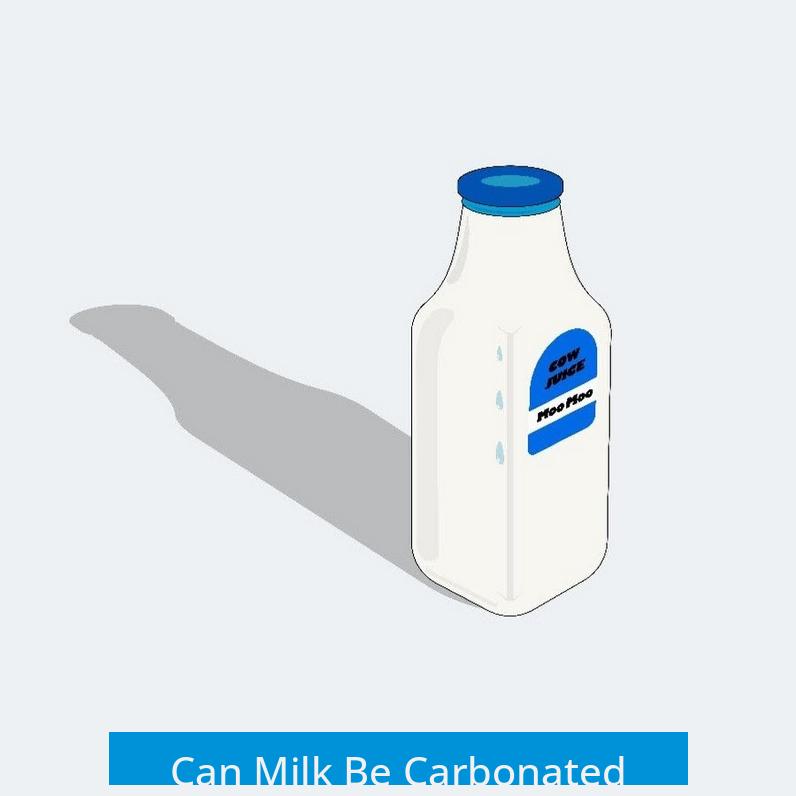
Carbonating traditional dairy milk using carbon dioxide (CO2) causes the milk to curdle due to protein denaturation triggered by lowered pH. This reaction causes milk proteins to aggregate, resulting in an undesirable texture. The same effect happens with soy milk and likely other plant-based milks, depending largely on their protein content.
Why Does Carbonation Cause Milk to Curdle?
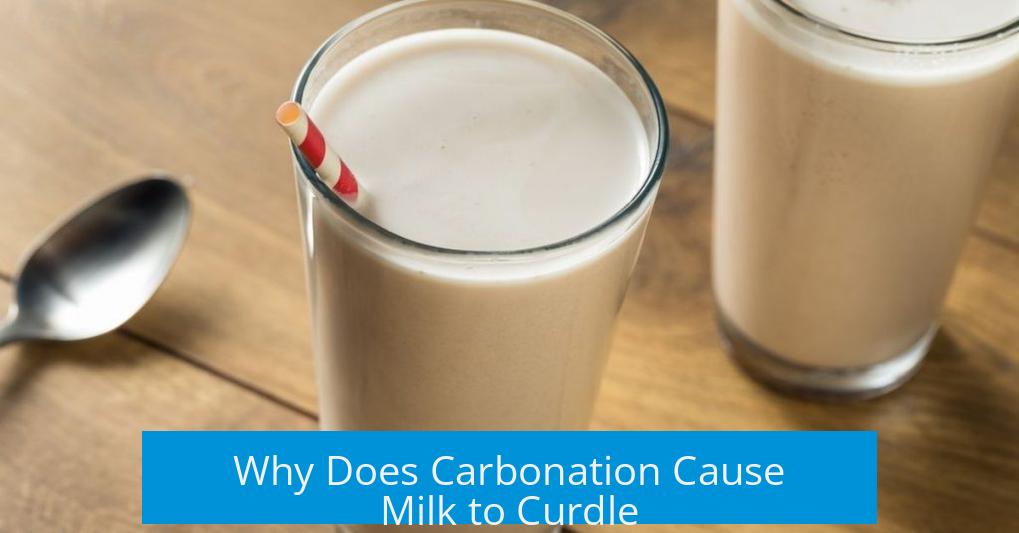
Carbon dioxide dissolves in milk, producing carbonic acid and lowering the pH. Milk contains proteins such as casein and whey, which are sensitive to pH changes. As the pH drops, these proteins unfold or denature, exposing sites that allow them to bond and aggregate.
This aggregation manifests as curdling—visible clumping and separation—rendering the milk unpalatable. The process affects both animal and certain plant-based milks because protein stability is linked to pH levels.
Carbonation Effect in Plant-Based Milks
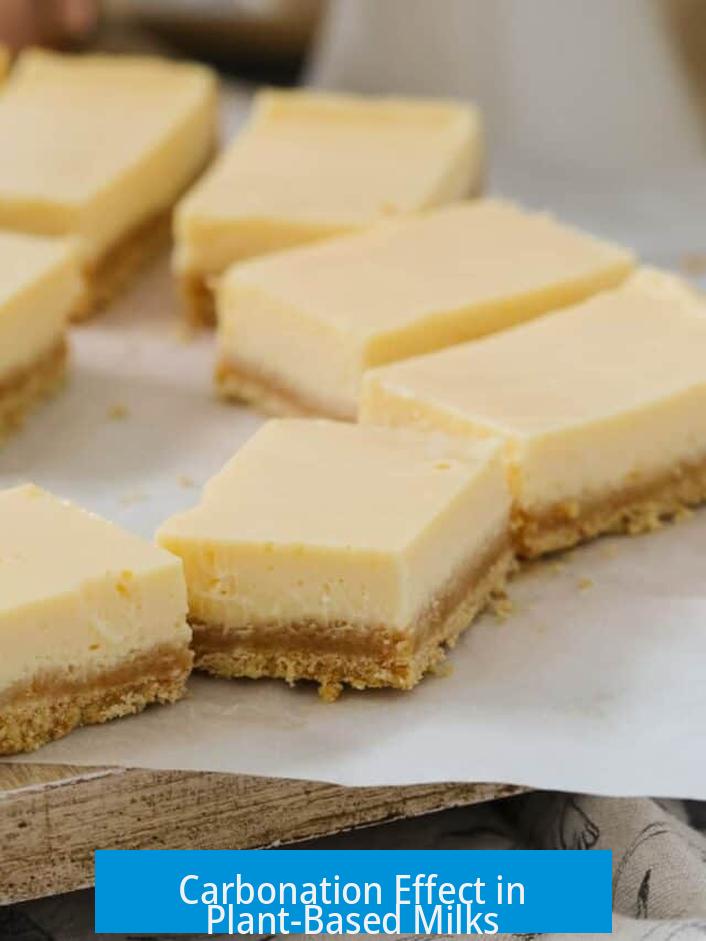
Soy milk, which contains significant proteins, reacts similarly to dairy milk when carbonated, curdling upon CO2 exposure. Other plant-based milks such as almond or oat milk may behave differently due to variation in protein types and concentrations, but the trend of curdling linked to pH changes is expected if protein content is sufficient.
Strategies to Prevent Curdling in Carbonated Milk
One practical way to prevent curdling is by adding pectin, a natural polysaccharide commonly found in fruit jams.
- Adding about 0.1 to 0.2% pectin by weight stabilizes the milk.
- Pectin molecules carry negative charges that bind to positively charged sections of milk proteins, preventing them from clustering.
- This stabilizes the milk’s protein structure even as the pH drops due to carbonation.
This approach is used in the production of some low-viscosity cultured milk drinks like Japanese Yakult, which has a mildly acidic, fermented character without curdling.
Alternative Gas: Nitrous Oxide for Dairy Foaming
Instead of CO2, nitrous oxide (N2O) is a preferred gas for imparting a bubbly texture to dairy-based products such as whipped cream. Unlike carbon dioxide, nitrous oxide does not acidify the milk or cause protein denaturation. It produces a smooth, sweetish foam without curdling or sour taste.
Using N2O is a practical workaround to achieve a foamy dairy texture without the chemical problems caused by carbonation with CO2.
Historical and Incidental Examples of Carbonated Milk
Carbonation of milk has been incidentally observed, such as when milk is exposed to dry ice (solid CO2), which sublimates into gas that dissolves in the milk. However, this results in an unusual taste and texture that most find unpleasant.
Such occurrences are rare and usually accidental. This explains why carbonated milk is not common in traditional food practices.
Carbonated Milk in Culture and Novelty Drinks
The idea of carbonated milk often elicits surprise or skepticism. Most people associate carbonation with soft drinks rather than dairy. However, some cultures integrate mildly fermented or fizzy dairy drinks with similar sensory qualities.
- Calpico is a Japanese milk-based soft drink. It tastes mildly tangy but is not actually carbonated.
- Doogh, a Persian yogurt-based drink, can be slightly effervescent due to natural fermentation or added carbonation.
- Kefir is a fermented dairy drink with natural fizziness from microbial activity.
These beverages show how dairy and carbonation or effervescence can coexist, but usually with fermentation or stabilizers to prevent curdling.
Humorous and Miscellaneous Notes
Attempts to carbonate milk at home or school sometimes cause conflicted results, such as disrupted lunches or accidental curdling. Mistakes mixing up nitrous oxide and carbon dioxide cartridges in food preparation illustrate the challenges of applying carbonation to dairy.
| Gas | Effect on Dairy | Use Cases |
|---|---|---|
| Carbon Dioxide (CO2) | Acidifies milk, causes curdling | Carbonation in soft drinks, generally unsuitable for fresh milk |
| Nitrous Oxide (N2O) | No acidification, creates smooth foam | Whipped cream, foamed dairy products |
Key Points on Carbonated Milk
- CO2 carbonation lowers milk pH, denatures proteins, and causes curdling.
- Plant-based milks with protein show similar reactions to CO2.
- Adding small amounts of pectin stabilizes milk proteins and prevents curdling during carbonation.
- Nitrous oxide offers a non-curdling alternative to create foamy dairy products.
- Incidental carbonation of milk usually produces undesirable taste and texture.
- Culturally, some fermented dairy drinks offer slight effervescence but are not classic carbonated milk.
Carbonated Milk? Exploring the Bubbly Dairy Dilemma
Can milk really be carbonated? The short answer: yes, but it curdles quickly due to chemistry. That’s right, science tells us that carbonated milk isn’t your typical fizzy drink— it’s a surprising adventure in dairy chemistry with some unexpected twists.
So, what happens when you try to carbonate milk? Let’s dig into the foamy facts.
Why Does Milk Curdle When Carbonated?
Milk proteins are delicate creatures. When you add carbonation, you introduce carbon dioxide (CO2), which dissolves into the milk and forms carbonic acid. This lowers the milk’s pH.
The acidic environment denatures milk proteins—the molecules unfold and link up with each other abnormally. This aggregation causes curdling—thinking of it as proteins clumping together like distant relatives unexpectedly forced at an awkward family reunion fits well enough.
This is not unique to dairy. Even soy milk shows the same curdling effect under carbonation. Other plant-based milks probably behave similarly, depending on their protein content. The higher the protein, the more likely for the bubbly curdle show.
Is There a Way to Keep the Fizz Without Clumps?
If you’re imagining a smooth and bubbly milk soda, there’s hope. Food scientists use a clever trick—adding pectin, a natural plant fiber commonly found in jams.
By blending in about 0.1-0.2% pectin by weight, the negatively charged pectin molecules cling to the positively charged milk proteins. This charge clash prevents proteins from aggregating. It’s basically a protein traffic controller that keeps the proteins from crashing into each other.
This method isn’t just theory. It’s used in beverages like Japanese yakult, a cultured milk drink with a low viscosity and a smooth texture that sometimes has a subtle tang or slight effervescence.
Nitrous Oxide: The Dairy-Friendly Alternative to CO2
Carbon dioxide drains milk’s natural sweetness and causes curdling. But nitrous oxide (N2O), the gas that whips cream into fluffy clouds, is a different story.
Imagine foaming dairy products with a gentle, slightly sweet bubbly factor instead of sour, chunky fizz. Whipped cream is the poster child for nitrogen oxide’s dairy magic—it aerates without damaging the proteins.
So if you want to “carbonate” milk without turning it into cottage cheese, use nitrous oxide for foaming instead of CO2. The bubbly texture is preserved, and the taste remains friendly to your palate.
The Accidental Carbonated Milk Experience
Here’s a funny story: In the ’90s, one adventurous camper left milk near dry ice overnight. The next morning, when cereal was poured over the milk, it tasted unexpectedly fizzy. The CO2 from the dry ice seeped into the milk and carbonated it by accident.
Was it delicious? Nope. It was an odd surprise that did not improve breakfast—carbonated milk has a strange mouthfeel and curdled texture that might ruin a classic cereal moment.
Carbonated Milk: Cultural Curiosity or Just Weird?
The idea of fizzy milk tends to provoke strong reactions. Some find it baffling or even horrifying. Yet, bubbly dairy drinks exist in various forms across cultures.
- Japanese Calpico (known colloquially and jokingly as “CalPiss”) is popular but isn’t truly carbonated milk—it’s a cultured milk-based soft drink with a unique tang.
- Persian Doogh is a yogurt-based savory drink often enjoyed lightly carbonated, combining saltiness with fizz.
- Kefir, a fermented milk beverage, naturally carries a mild effervescence due to fermentation—essentially fizzy yogurt.
Fizzy milk drinks can be delicious if done right, blending flavors and balancing textures to delight the tongue rather than alarm it.
What About DIY Carbonated Milk at Home?
Remember the curious second grader who got in trouble for trying to carbonate milk? It’s a learning moment we all share—sometimes curiosity leads to sticky situations.
Also, be cautious if trying to carbonate milk at a restaurant or home kitchen. Using CO2 cartridges mistakenly swapped for nitrous oxide can lead to unexpected results—not just in taste but in texture and chemical stability of your drink.
The Final Word: Should You Carbonate Milk?
So, why would anyone want fizzy milk? Maybe to be quirky, adventurous, or to invent the next unique beverage sensation. Still, chemistry tells us straightforward carbonated milk isn’t a smooth ride. It curdles and sours quickly under CO2, making it a challenge for food innovators.
Adding pectin or using nitrous oxide can help dodge the curdle catastrophe. Otherwise, culture, tradition, and fermentation offer more natural ways to enjoy effervescent dairy drinks.
Intrigued enough to experiment? You might want to watch these:
Carbonated milk: a scientific curiosity wrapped in a creamy riddle. It’s a testament to how chemistry interacts with food in surprising ways—but not all bubbles are created equal.
Why does milk curdle when carbonated with CO2?
Carbonation lowers the milk’s pH, which denatures its proteins. This causes the proteins to clump together, resulting in curdling. The same happens with soy and other plant milks depending on their protein content.
How can curdling be prevented when adding carbonation to milk?
Adding about 0.1-0.2% jam pectin by weight can stop curdling. The pectin binds to milk proteins and keeps them from aggregating. This technique is used in some Japanese yogurt drinks.
Is there a better way to add bubbles to dairy without curdling?
Yes, nitrous oxide is used for foaming dairy. Unlike CO2, nitrous oxide does not cause sourness or protein clumping. Whipped cream is commonly made this way.
Has milk ever been carbonated by accident?
Yes, cases have occurred such as when dry ice vapor seeps into milk. It carbonates the milk, causing a strange taste and texture, which is usually unpleasant.
Are there any traditional fizzy milk drinks?
Some cultures have fizzy dairy drinks, like Persian doogh, a lightly carbonated yogurt-based beverage. Drinks like Calpico may seem similar but are not truly carbonated milk.


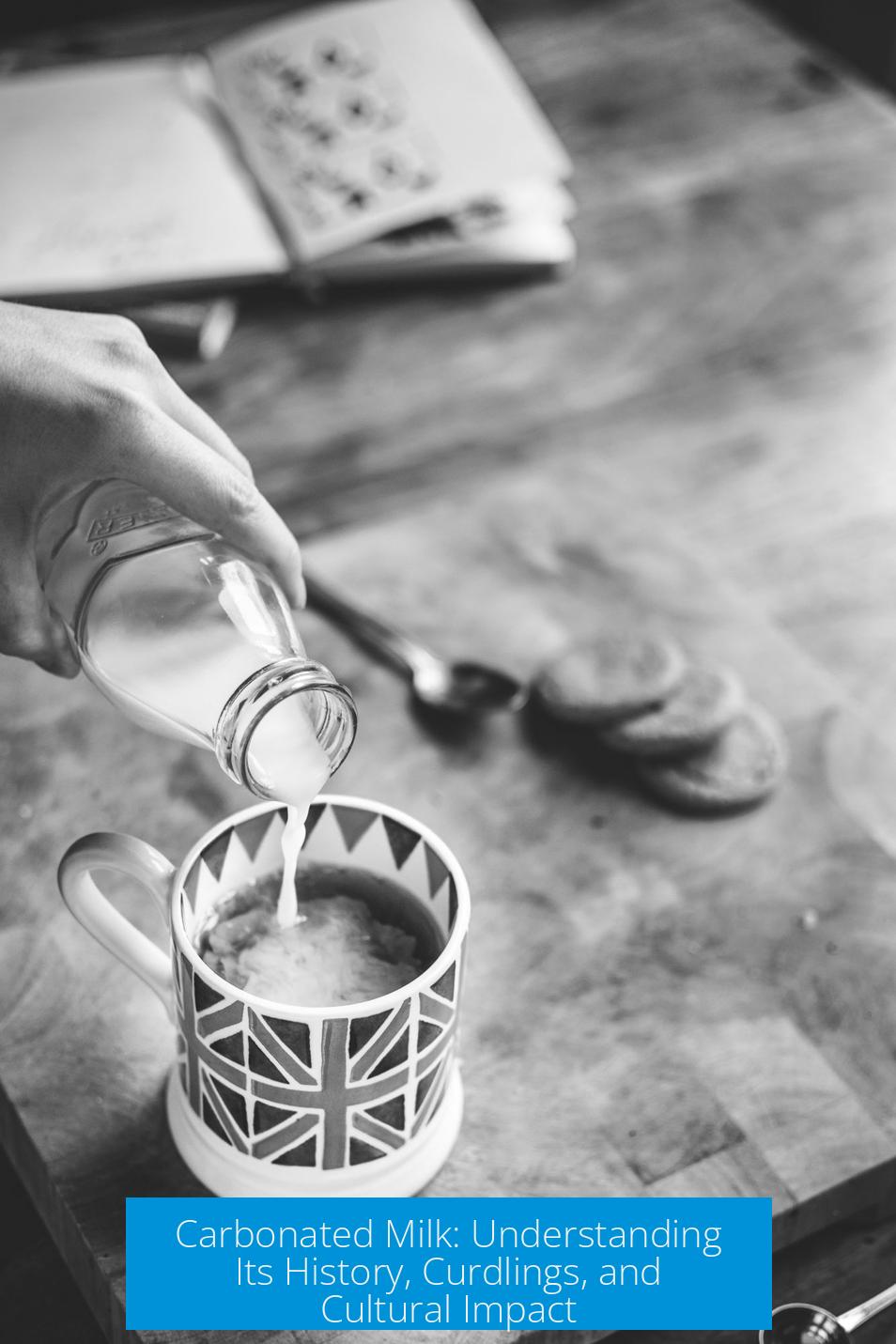

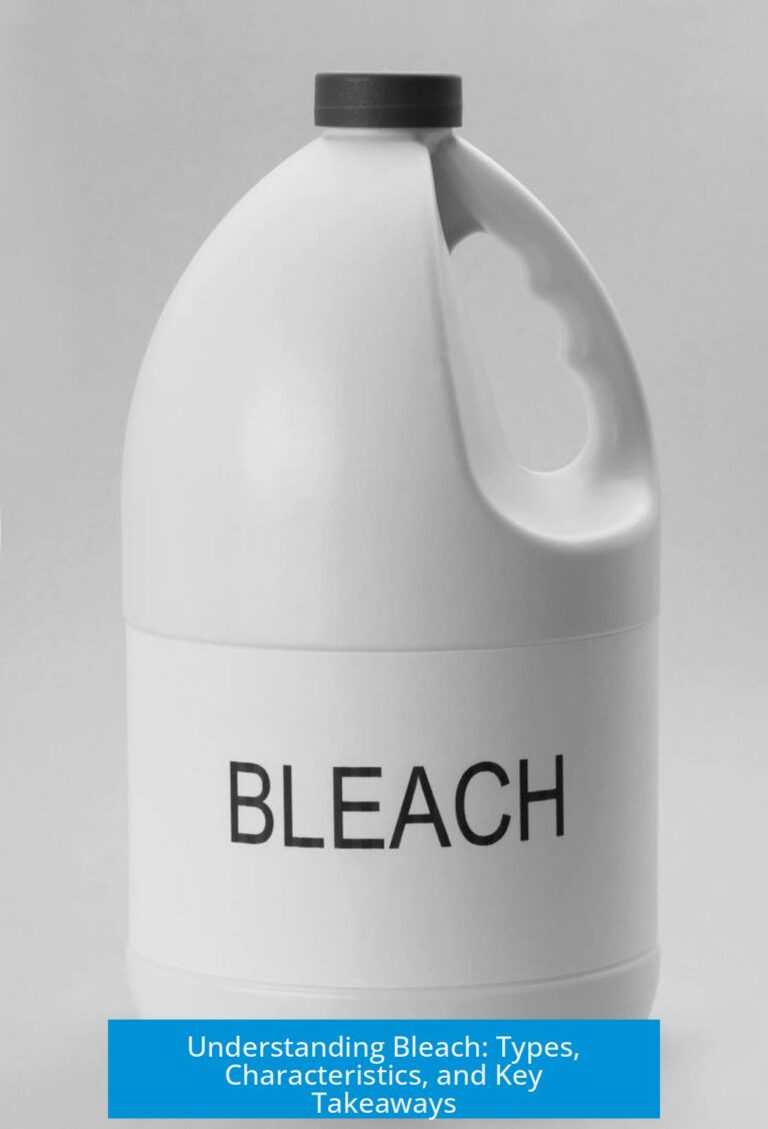
Leave a Comment